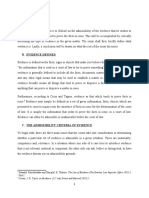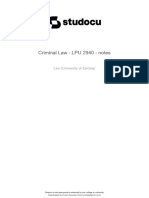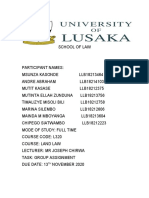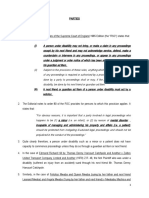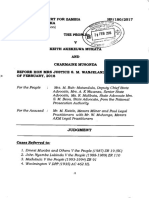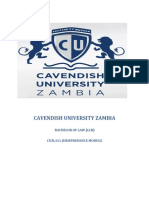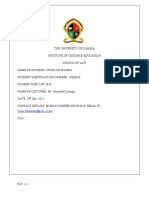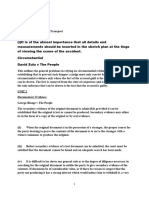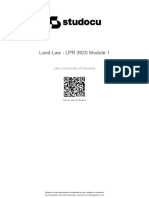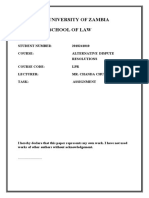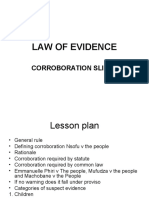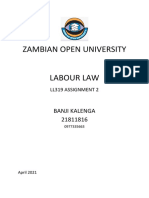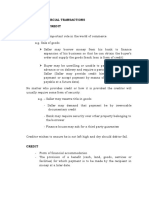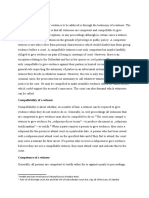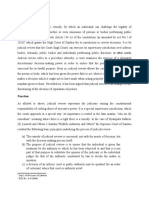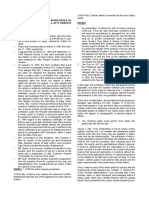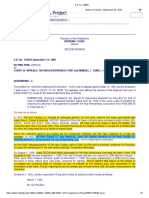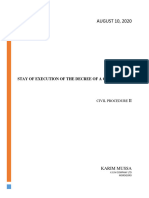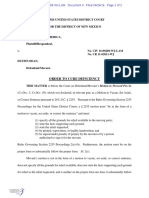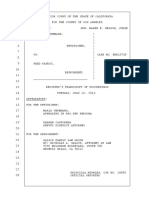ZAMBIA OPEN UNIVERSITY
LAW OF TORTS II
LL4 ASSIGNMENT 2
BANJI KALENGA
March 2019
�INTRODUCTION
This essay is written in response to the assignment question: Tarnishing or diminishing the
reputation of another person is a tortuous wrong. Define and discuss this tort, pointing out
its elements, its two categories and its main defences. Refer to the principal decided cases in
this tort.
The tort referred to in this question is the tort called defamation. This essay will explain this
tort in line with the guidelines provided in the question.
THE TORT OF DEFAMATION
Every individual on earth has a name and reputation to protect whether he is poor or rich. It
does not matter the class he belongs to he/she still has that reputation which needs to be
guarded jealously from unjustifiable attacks.
If one attacks someone’s reputation, name or fame he defames him. Defamation is the act of
publishing an untrue statement which negatively affects someone’s reputation. It must be
noted that merely causing anger or upsetting is not enough to amount to defamation. This is
because the words do not convey a defamatory meaning to those who heard them (simple
abuse is unlikely to cause real damage to a reputation). In defamation, the words used must
lower the claimant in the estimation of the public and make him an object of ridicule, in order
to be capable of being defamatory. An individual is defamed when a person publishes to a
third party words or matter containing an untrue imputation against his or her reputation. For
a statement to be defamatory the imputation must tend to lower the claimant in the estimation
of right-thinking members of society generally. Even if the words damage a person in the
eyes of a section of society or the community, they are not defamatory unless they amount to
a disparagement of the reputation in the eyes of right-thinking people generally.
Rogers, W.V.H.1 defines Defamation as the Publication which reflects on a person’s
reputation and tends to lower him in the estimation of right thinking members of society
generally or tends to make them shun him. In Blennerhasset v Novelty Sales Services
Limited2it defined that ‘a defamatory statement is a statement which tends to lower a person
in the estimation of right thinking members of society generally or to cause him to be
shunned or avoided or to expose him to hatred, contempt or ridicule, or to convey an
imputation on him disparaging or injurious to him in his office, profession, calling, trade or
business’.
1
Rogers, W.V.H. [2006]. Winfield & Jolowicz on Tort. P515.
2
[1933] 175 LT Jo 393
2
�In Sim v Stretch3Lord Atkin established a test to decide whether words were capable of
defamatory meaning with regard to lowering the estimation of the plaintiff to right thinking
members of society generally. He established that if the words were capable of constituting
defamation, then it is up to the court to decide whether they are defamatory in the
circumstances in each case. In Byrne v Deane4it was held that merely alleging that someone
has started a proper procedure for preventing/suppressing crime could not prima facie be
defamatory. In the matter of Gray v Jones5it was held that spoken words that would make a
plaintiff be excluded from society and could make them a subject of hatred, ridicule and
contempt are claimable.
A tort of defamation is committed when the defendant publishes an untrue statement
referring to the claimant and affecting his reputation, and no defence is available. The
principle aim of the law of defamation is the protection of individual's reputation.
Defamation is divided into two categories: Libel and Slander. Libel covers statements made
in some permanent form such as printed or written text, and includes films, pictures, statues,
and effigies. Slander is defamation made in a transitory form: spoken words or gestures.
Slanders are only actionable if the claimants can show that they had suffered special
damages, i.e. have suffered a loss which is capable of being estimated in monetary terms.
However, there are a number of exceptional cases where slanders become actionable per se,
such as where the statement imputes unfitness to one's profession or that the statement had
been made with malice.
The law of defamation recognises two types of meanings. The first type of meaning is the
natural and ordinary meaning of the words. This is not limited to the obvious and literal
meaning, but includes any inference which the ordinary, reasonable reader would draw from
the words. The second type of meaning is the innuendo meaning:
False Innuendo: An alternative meaning which the ordinary, reasonable person who can
read between the lines would infer from the words is known as the ‘false innuendo’ meaning.
True Innuendo: True innuendo arises when words that appear to be innocent to some people
appear as defamatory to others because they possess special knowledge or extra information
(for example, reading about someone getting married wouldn’t seem damaging to their
3
[1936] 2 All ER 1237
4
[1937] 1 KB 818
5
[1939]1 All ER798
3
�reputation - unless you knew that they were already married).
A claimant can ask that the court consider a statement’s false or true innuendo meaning.
In the matter of Lewis v Daily Telegraph6the House of Lords defined the general principles of
the ascertainment of the meaning of words in defamation proceedings. The test to be applied
is what the words would convey to the ordinary reader. The sting alleged may not be in the
words themselves as in what the ordinary man will infer from them and that that is in
consequence regarded as part of the natural and ordinary meaning.
In Morgan v Oldham Press7 it was held that if there was no reasonable reader who could
understand the words written as referring to the plaintiff, then there was no prima facie case
of defamation.
The words complained of must have been published by the defendant to a third party.
Publication includes any means of communication even if only to one other person. Due to
the extent of the term publication, many individuals with only a slight connection to the work
can find themselves ensnared in defamation proceedings such as editors, printers,
broadcasters, etc. The matter of Bryanston Finance Limited v de Vires8 which held that in
matters where a tort is committed by joint tortfeasors, if one obtains either a judgement
against one or more of them, or a benefit by which he released one of them, then subject to
certain exceptions, he released all the others. Pullman v Hill9held that dictation to a typist is
sufficient publication to warrant a defendant liable for defamatory words. In Huth v Huth10it
was ruled that a letter opened and read by an unauthorised person, cannot amount to
publication. In the matter of Vizetelly v Mudie’s Select Library11 the court held that a person
who is found to have published a defamatory statement may evoke a defence of innocent
dissemination which absolves him/her of liability provided that he/she had no knowledge of
the defamatory nature of the statement, and that his/her failure to detect the defamatory
content was not due to negligence.
A plaintiff must prove that the defamatory statement refers to him or her. In most cases this
can be done without difficulty, as the claimant will be named. However, a claimant who has
6
[1964]HL
7
[1971]HL
8
[1975] QB 703
9
[1891]1 QB 524
10
[1915]3 KB 32
11
[1900] 2 All ER 55
4
�not been referred to by name must prove that the words complained of were understood by
some readers as referring to him or her.
In the case of Multigroup Bulgaria Holding v Oxford Analytica Ltd12, it was held that an
article defaming an identifiable individual would give rise to a cause even where no one
reading the article had prior knowledge of the victim. The case of Youssoupoff v MGM13held
that a portrayal of a character is actionable when a considerable number of reasonable people
would identify the character portrayed with the plaintiff and consider the portrayal
defamatory.
In Knuppfer v London Express Newspapers14it was held that it is an essential element of
defamation that the words complained of should be published of the plaintiff as an individual.
The matter of Hulton & Co.15 v Jones and Cassidy v Daily Mirror16 held that the fact that a
defendant did not intend to defame a plaintiff is not a defence to a claim of libel. In Newstead
v London Express17it was held that the liability for libel does not depend on the intention of
the defamer but on the fact of the defamation.
In the matter of Allsop v Church of England Newspaper18it was that where more than one
ordinary meaning of a word exists, the popular meaning of the word or term would prevail. In
Charleston v News Group Newspapers19accepted that an image must have been deeply
offences to the plaintiffs but ruled against defamation because the rest of the article had a
neutralising effect.
SLANDER-LIBEL DIFFERENCES
Previously the fundamental distinction between slander and libel was between written
(including printed) words, which was libel, and spoken words which was slander. However,
nowadays the general view is that the test of libel is whether the publication is in
“permanent” form, other cases being slander. Examples of libel are writing, printed materials,
or other mark or sign exposed to view, or a picture, waxworks, statue or effigy. Slander
12
[2001]EMLR 737
13
[1934]50TLR581
14
[1944]AC 116
15
[1910]AC 20
16
[1929] 2 KB 331
17
[1940] 1 KB 377
18
[1972]2 All ER26
19
[1995] 2 AC 65
5
�consists in attack which is transient in form. The spoken word is the common example; but
here again there may be other forms, such as the making of some derogatory gesture; for
mime can do as much damage as words. The defamation in the sign language of the deaf and
the dumb, and mimicry and gesticulation generally (e.g. holding up an empty purse to
indicate that the claimant has been robbed by the defendant) would be slander, because the
movements are more transient. These examples show that it is only broadly true to say that
libel is addressed to the eye, while slander is addressed to the ear.
The principal practical difference between claims for libel and claims for slander is what a
plaintiff must prove to succeed in his or her claim. In libel claims, the claimant does not have
to prove that he or she has suffered loss or damage as a result of the publication. In contrast,
in claims for slander, the claimant must prove actual damage. There are however several
exceptions to the rule that actual damage must be proved in claims for slander. The reason for
this distinction is that it is more likely that written words will be taken seriously and
understood to have a defamatory meaning.
If the spoken words accuse the claimant of committing a crime; of having a contagious
disease; of being unfit for his or her office, business or profession; or if the communication is
an attack of the credit of trades people; or an accusation of being unchaste or adulterous
against a woman or girl. In these cases damage is presumed and need not be proved.
The consequences of the distinction between libel and slander are that libel is a crime while
slander is not.
DEFENCES
Justification (Truth)
It is a complete defence to an action for defamation to prove that the defamatory statement is
substantially true. It is not necessary for a defendant to show that there was a public interest
in publication and it does not matter whether he or she acted maliciously.
If relying on the defence of justification the burden of proof is on the defendant to prove that
the allegations made are true. The defendant must prove it on the balance of probabilities,
that is, the allegation is more likely than not to be true.
6
�A defendant is not required to prove that every allegation is true. Two or more distinct
allegations a defence of justification can still succeed if the words not proved to be true do
not materially injure the claimant’s reputation having regard to the imputations which are
proved true.
An allegation published by repeating a rumour cannot be justified by proving that there was
such a rumour. A defendant is required to prove the substance of the allegation.
Since the burden of proving the truth of an allegation is on the defendant, plaintiffs enjoy a
distinct advantage in defamation claims. Justification has to be used with great care. It can
often be difficult to obtain sufficient admissible evidence to persuade a court that the
statement is true. This will sometimes result in the media being unable to publish allegations
which are generally believed to be true, but which they may not be able to prove to the
standard required in court. Further, an unsuccessful defence of justification is likely to
increase the level of any damages awarded.
Fair Comment
If a defendant can prove that the defamatory statement is an expression of opinion on a matter
of public interest and not a statement of fact, he or she can rely on the defence of fair
comment.
The courts have said that whenever a matter is such as to affect people at large, so that they
may be legitimately interested in, or concerned at, what is going on or what may happen to
them or to others, then it is a matter of public interest on which everyone is entitled to make
fair comment.
The comment must be based on true facts which are either contained in the publication or are
sufficiently referred to. It is for the defendant to prove that the underlying facts are true. If he
or she is unable to do so, then the defence will fail. As with justification, the defendant does
not to have to prove the truth of every fact provided the comment was fair in relation to those
facts which are proved.
Fair does not mean reasonable, but signifies the absence of malice. The views expressed can
be exaggerated, obstinate or prejudiced, provided they are honestly held. If the plaintiff can
show that the publication was made maliciously, the defence of fair comment will not
7
�succeed.
Qualified Privilege
If untrue defamatory allegations are published on an occasion of privilege, they will be
protected from a claim for defamation. Although the law of defamation exists to protect
reputations, it is recognised that in particular situations, it is to the benefit of society generally
for people to be able to communicate without the fear of being sued for defamation. This is so
despite the risk that a person’s reputation will be damaged and they will not be able to restore
it by bringing a claim for defamation.
In the matter of Adam v Ward20it was ruled that if a communication is made in the pursuance
of a duty or on a matter in which there was a common interest on the party making and the
party receiving it, the occasion is said to be privileged and this privilege is only qualified and
may be rebutted by proof of express malice.
Absolute Privilege
Absolute privilege provides a complete defence regardless of how malicious or untrue the
allegation is. It applies to proceedings in Parliament or courts or ministerial communications.
In the matter of Daniel v Griffiths21 the court ruled that Parole Board proceedings are not part
of the proceedings of any court and thus not protected by privilege. In S v Newham London
Borough Council22the court held that communications from others to a minister aren’t
protected by privilege.
CONCLUSION
Every man is entitled to his good name and to the esteem in which he is held by others, and
has a right to claim that his reputation shall not be disparaged by defamatory statements made
about him to a third person or persons without lawful justification or excuse. To succeed in
defamation therefore a plaintiff must show that the statement was defamatory, that it referred
to him and that it was published to another person other than himself (the plaintiff).
20
[1917] AC 309
21
[1998]EMLR 488
22
[1998]EMLR 583
8
�BIBLIOGRAPHY
Besa, M. (2006). Law of torts II. Lusaka:ZAOU.
Brazier, M.(1993). Street on torts. London: Butterworths
Weir, T.(1996). A casebook on tort. London: Sweet and Maxwell.




